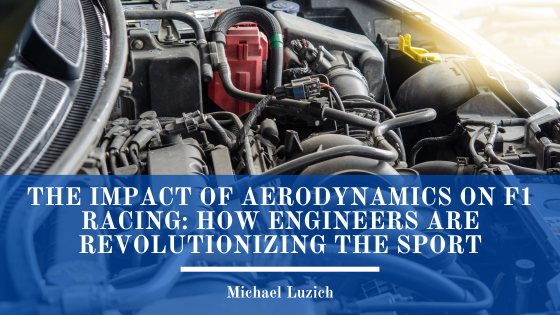Formula 1 (F1) racing has always been at the forefront of technological advancements in the automotive industry. One area that has seen significant development and revolutionized the sport is aerodynamics. The study and application of aerodynamics in F1 racing have allowed engineers to push the boundaries of speed and performance, giving teams a competitive edge on the track. The following blog will explore the impact of aerodynamics on F1 racing and how engineers are continuously working to enhance the sport.
Enhanced Performance: Aerodynamics plays a crucial role in F1 racing as it directly affects a car’s performance. By optimizing the airflow around the vehicle, engineers can maximize downforce, which pushes the car onto the track, allowing for increased grip and cornering speeds. This enhanced performance leads to faster lap times and increased competitiveness among teams.
Constant Innovation: F1 teams invest significant resources into aerodynamic research and development. The constant pursuit of performance gains drives engineers to explore innovative designs and technologies. Computational Fluid Dynamics (CFD) simulations and wind tunnel testing are extensively used to analyze and optimize every aspect of a car’s aerodynamics. Engineers experiment with various components, including the front and rear wings, diffusers, and side pods, to find the perfect balance between downforce and drag reduction.
Regulatory Challenges: While engineers strive to push the limits, they must also adhere to strict regulations set by the FIA (Fédération Internationale de l’Automobile). These regulations are in place to ensure safety, maintain a level playing field, and control costs. F1 engineers face the challenge of finding innovative solutions within these limitations. They constantly seek ways to optimize aerodynamics while complying with the rules, which requires creativity and attention to detail.
Integration of Hybrid Power Units: The introduction of hybrid power units in F1 has further impacted aerodynamics. The integration of the complex power units components, such as the Internal Combustion Engine (ICE), Energy Recovery System (ERS), and Turbocharger, affects the overall aerodynamic design of the car. Engineers must strike a delicate balance between optimizing the car’s aerodynamics and efficiently cooling the power unit. This integration has challenged engineers to find innovative ways to manage airflow around the car’s components.
The Pursuit of Efficiency: Aerodynamic advancements in F1 are not only focused on speed but also on fuel efficiency. As the sport moves towards sustainability, engineers are working to reduce drag and improve the overall efficiency of the cars. This includes developing streamlined bodywork, minimizing the wake behind the car, and implementing energy recovery systems. These efforts not only enhance performance but also contribute to reducing the environmental impact of the sport.
Collaboration and Cross-Disciplinary Approach: The impact of aerodynamics on F1 racing highlights the significance of collaboration between different disciplines. Aerodynamicists, mechanical engineers, and designers work together to create a holistic approach to car design. This collaboration ensures that all aspects, from the chassis to the aerodynamic elements, are optimized for maximum performance.
Aerodynamics has become a critical aspect of F1 racing, revolutionizing the sport and propelling it to new heights of performance and innovation. The constant pursuit of improved aerodynamic efficiency, combined with evolving regulations and the integration of hybrid power units, challenges engineers to push the boundaries of what is possible on the track. The impact of aerodynamics extends beyond F1 racing, as the advancements made in this field often find their way into road car technology, making the sport a driving force for innovation in the automotive industry as a whole.
